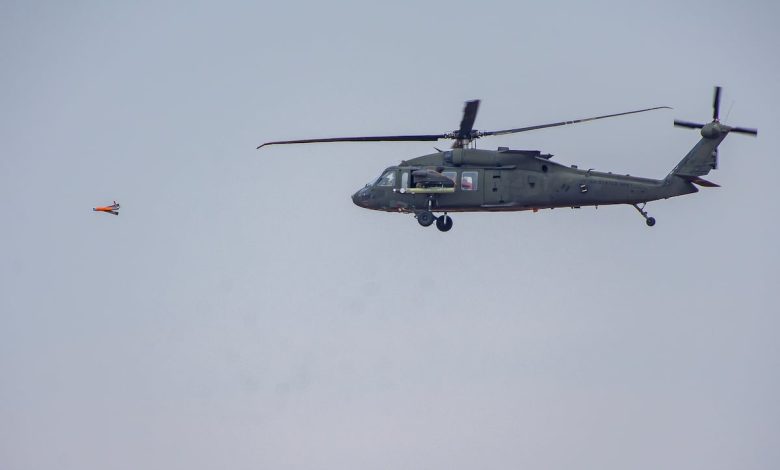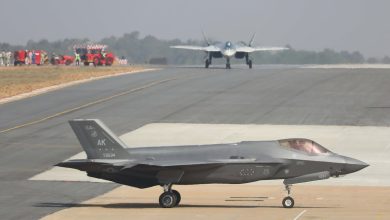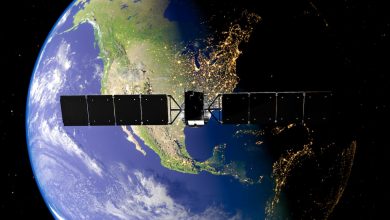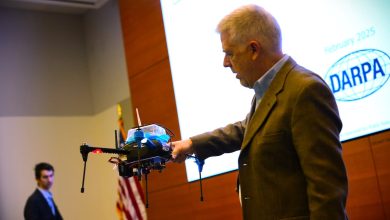US Army wants spy drones to launch from high-altitude motherships

The Army is scouring industry for unmanned aircraft systems to launch from medium- or high-altitude platforms that would perform tasks like intelligence, surveillance and reconnaissance, according to a request for information posted to the federal business opportunities portal Sam.gov.
The Special Electronic Mission Aircraft Product Directorate, part of the Army’s Fixed-Wing aircraft Project Office, plans to demonstrate operational capability in the fiscal 2026 timeframe, the notice states.
The “Launched Effects” systems, or LE, would be integrated onto “the hardpoints” of an executive jet category aircraft, such as a Bombardier G6500, which would operate above 41,000 feet mean sea level and would reach true airspeed of above 400 knots for more than seven hours. This means the LE and its sensors would need to survive in an air temperature 65 degrees below zero for lengthy durations.
Launched Effects is the service’s term of art for an envisioned unmanned segment among its aerial platforms, capable of delivering a wide range of capabilities such as targeting, reconnaissance, surveillance, network extension or kinetic strike. Launched Effects can be deployed from both air and ground vehicles.
The LEs would be carried on the aircraft from wing pylons and should be able to deploy from the aircraft when flying in configuration, according to the RFI.
The overall launched effect effort represents a new direction in the Army’s aviation portfolio, which prioritizes drones and the more loosely defined category of LE platforms as the tip of the spear in enemy contact.
The Army is leaning hard into developing and deploying launched effects on the battlefield and is working to speed up its plan to procure a variety of LEs capable of flying at different ranges and speeds. The service canceled its manned Future Attack Reconnaissance Aircraft a year ago and has used some of that freed-up funding to pursue launched effects more at a quicker clip.
In 2020, the service selected 10 companies to provide mature medium-range launched effects technologies. From those, the Army then chose five companies earlier this year to come together to build a prototype, with each company bringing a different element to the system.
Anduril Industries is providing the air vehicle. Anduril purchased Area-I, the original developer of the vehicle — the Altius 700 — in 2021. The Altius 700 has been in use by the Army to evaluate launched effects for over five years.
Collins Aerospace, a Raytheon Technologies company, is the mission system provider, and Aurora Flight Sciences is the system integrator. Technology Service Corp. and Northrop Grumman Information Systems are providing modular payloads.
The medium-range LE will also be developed in conjunction with Program Executive Office Missiles and Space to fill its requirement for a helicopter-fired Long-Range Precision Munition.
The Army is also working on a short-range LE and a long-range version with plans to begin prototyping for the short-range version early in fiscal 2025 that will continue through fiscal 2029. The service plans to put out a request for proposals for the long-range system in the third quarter of fiscal 2026, a year ahead of its original schedule.
Additionally, the service has expressed interest in experimenting with launched effects for even higher altitude platforms like balloons or long-endurance, fixed-wing, solar-powered platforms capable of operating in the stratosphere.
Jen Judson is an award-winning journalist covering land warfare for Defense News. She has also worked for Politico and Inside Defense. She holds a Master of Science degree in journalism from Boston University and a Bachelor of Arts degree from Kenyon College.
Read the full article here






